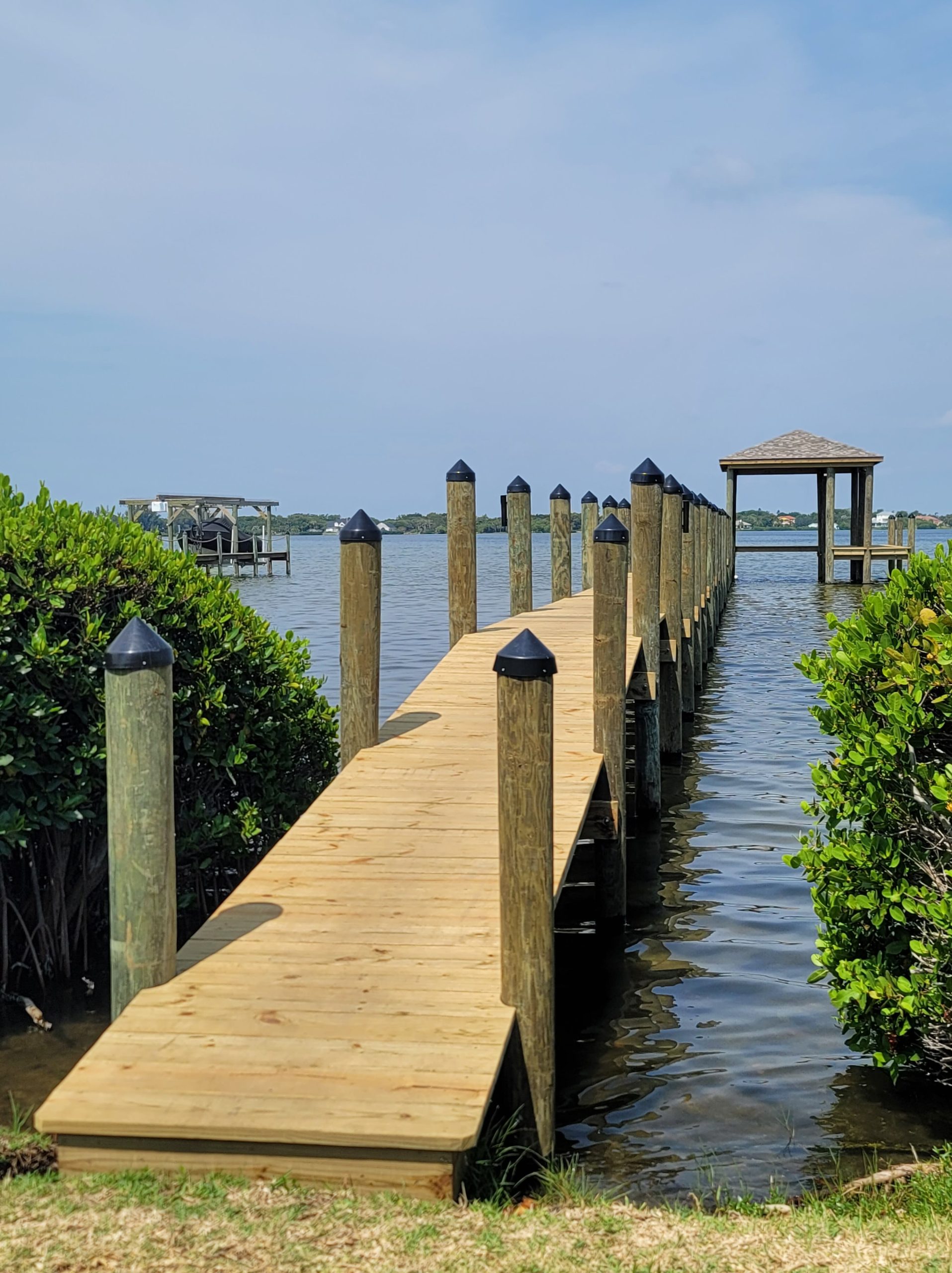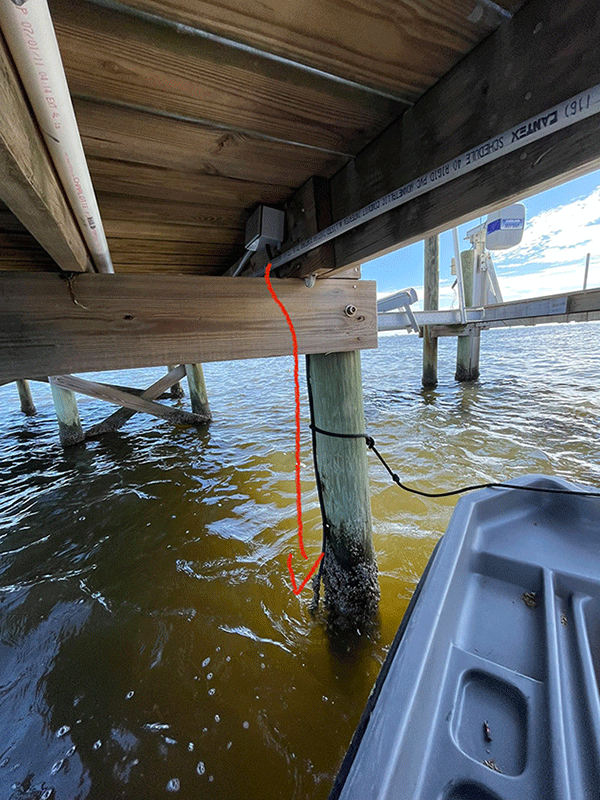Efficient Dock Fixing Techniques: Making Sure Structural Stability
Ensuring the structural stability of docks via effective fixing methods is critical for the long life and safety and security of aquatic centers. This entails a multi-faceted technique beginning with comprehensive assessments using advanced technologies like finder tools and from another location operated vehicles (ROVs) to detect both noticeable and hid damages. Subsequently, picking the ideal repair service materials, such as corrosion-resistant alloys and composite products, is vital for toughness. Structural reinforcement techniques, including the implementation of cross-bracing systems and load-distribution plates, play a vital duty in mitigating stress and anxiety points. However, the importance of these techniques comes to be obvious when exploring innovative repair service methods and preventative maintenance approaches.
Analyzing Dock Damage
Evaluating dock damages is a vital primary step in guaranteeing the architectural integrity and safety and security of any docking center. This preliminary evaluation involves a thorough inspection to identify both hidden and visible damages. Key elements to check out consist of the dock's structure, pilings, outdoor decking, and hardware. Each component should be inspected for indications of wear, rot, rust, or various other kinds of destruction that could compromise the structural stability.
Structural engineers or qualified inspectors usually carry out these assessments using specialized tools and techniques. For circumstances, undersea inspections may utilize finder equipment or from another location operated vehicles (ROVs) to spot submerged damage. Over water, visual inspections are complemented by making use of wetness meters and other diagnostic devices to reveal underlying problems not immediately visible to the nude eye.

Picking Fixing Materials
Picking the proper repair service products is a crucial action in the dock remediation process, one that directly affects the long life and efficiency of the repaired structure. Material selection have to be driven by elements such as environmental conditions, load-bearing demands, and compatibility with existing dock components.
In enhancement to timber, composite materials are increasingly preferred because of their toughness and low upkeep demands. Compounds, commonly made from a blend of plastic and timber fibers, provide superb resistance to rot, bugs, and UV damages. For metal anchors, selecting corrosion-resistant alloys such as galvanized steel or marine-grade light weight aluminum is necessary to avoid corrosion and guarantee architectural integrity in saline water problems.
Epoxy materials and marine-grade sealants are vital for repairing fractures and securing joints, providing a water resistant obstacle and enhancing the dock's general toughness. By meticulously selecting top notch products, dock repairs can accomplish long-lasting outcomes, therefore safeguarding against future deterioration and making certain secure, dependable use.
Structural Support Strategies
Reliable architectural reinforcement techniques are vital in guaranteeing the stability and longevity of dock fixings. This approach is specifically efficient for docks revealed to hefty tons or severe environmental problems.
One more crucial technique is the application of fiber-reinforced polymers (FRP) These products offer high strength-to-weight proportions and superb resistance to rust, making them suitable for strengthening concrete or wood more information anchors. FRP can be applied in sheets or strips and bound with epoxy resins to boost structural integrity.
Supporting and anchoring systems additionally play a critical function in structural support. Cross-bracing, utilizing metal or wood beam of lights, can counteract side forces, reducing guiding and motion. Anchoring systems, such as helical piers read here or driven heaps, give a steady foundation by transferring lots to deeper, more stable dirt layers.
Finally, the integration of load-distribution plates can aid disperse weight more equally across the dock's surface area, alleviating local stress factors. These strategies jointly ensure that docks remain risk-free and durable, capable of holding up against the roughness of their operational atmosphere.
Advanced Repair Work Methods

An additional innovative method entails undersea welding, which permits for repair work to be performed without the demand to dewater the area. This technique is especially beneficial for dealing with architectural concerns in submerged dock parts, making sure marginal interruption to procedures. Boosted welding methods, combined with robot systems, deliver precision and reliability, therefore prolonging the life expectancy of the dock.
Additionally, cathodic protection systems are applied to avoid corrosion in metal dock structures. By utilizing sacrificial anodes or satisfied current systems, these methods successfully reduce the electrochemical procedures that bring about product deterioration.
Last but not least, progressed monitoring innovations, such as structural wellness monitoring (SHM) systems, supply real-time data on the condition of dock frameworks. These systems make it possible for aggressive upkeep and prompt treatments, ultimately making sure the long-term architectural integrity of the dock.
Upkeep and Prevention
Maintenance and prevention are essential principles click now that underpin the longevity and safety and security of dock structures. Regular assessments are extremely important, allowing for early discovery of damage, possible weaknesses, and environmental effects. A positive strategy, entailing regular look for deterioration, rot, and structural changes, reduces pricey repair services and prolongs the dock's functional life.
Preventative actions should consist of using protective finishings to steel elements to safeguard against corrosion and using treated wood to resist decay. Additionally, making certain proper drain and air flow can protect against water build-up, which is an usual root cause of architectural degradation. Integrating top quality products and adhering to maker standards throughout construction and repair phases additionally play essential duties in enhancing resilience.

Educating workers in dock upkeep best practices makes certain constant application of preventive procedures. Leveraging technological developments, such as drones for evaluations and sensing units for real-time monitoring, can even more enhance maintenance initiatives. By focusing on maintenance and avoidance, dock owners can make sure structural integrity, operational security, and economical management over the dock's life expectancy.
Final Thought
Finally, maintaining the architectural integrity of aquatic centers requires extensive dock repair work methods. Comprehensive inspections making use of sophisticated devices uncover both visible and hid problems, while the choice of suitable repair work products boosts toughness. Carrying out structural reinforcement approaches addresses stress and anxiety factors efficiently. Advanced repair techniques, paired with regular upkeep methods, ensure the dock remains functional and secure under diverse environmental problems. Taking on these methods considerably prolongs the life expectancy and functionality of aquatic facilities.
Making sure the structural integrity of anchors through efficient repair strategies is paramount for the longevity and safety of aquatic centers.Choosing the appropriate repair service materials is a crucial action in the dock restoration procedure, one that straight affects the long life and efficiency of the repaired framework.Reliable structural reinforcement techniques are important in ensuring the security and durability of dock repair services. By focusing on upkeep and avoidance, dock owners can make certain architectural integrity, functional security, and cost-efficient monitoring over the dock's life expectancy.
In final thought, preserving the architectural integrity of aquatic centers necessitates comprehensive dock repair work techniques.